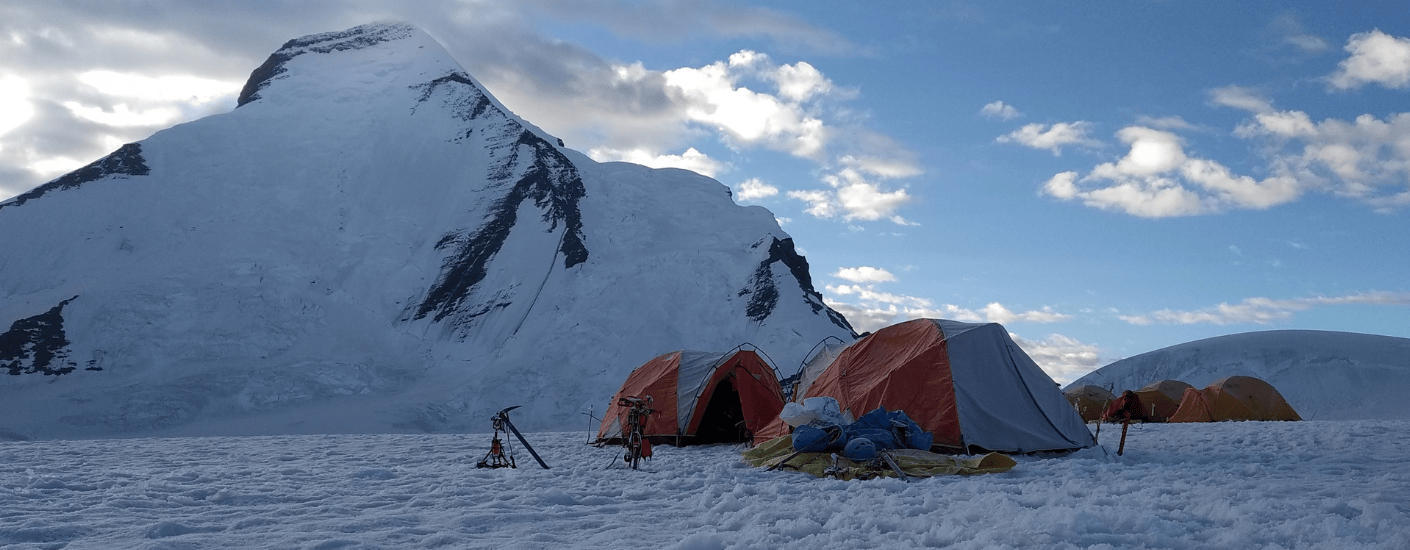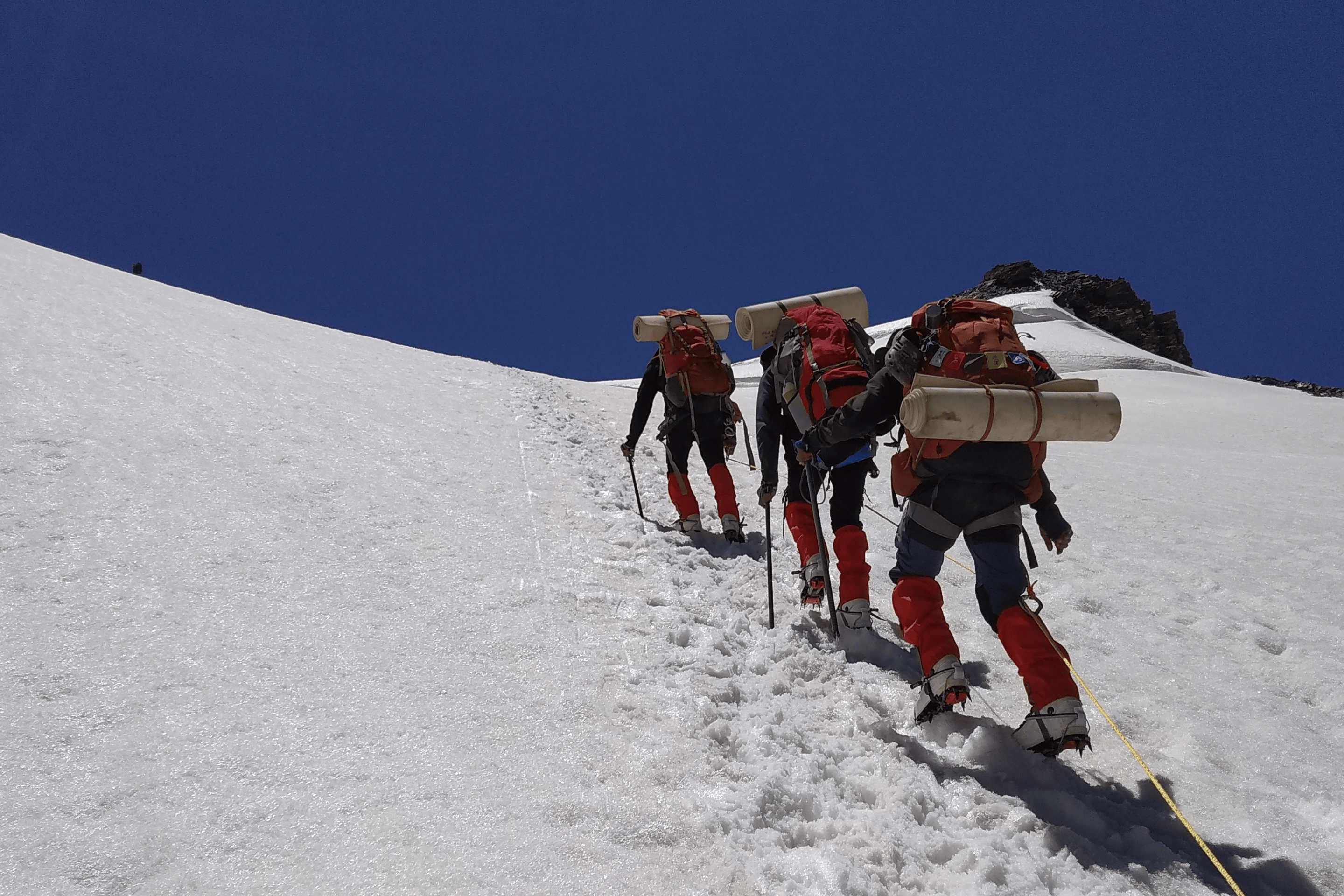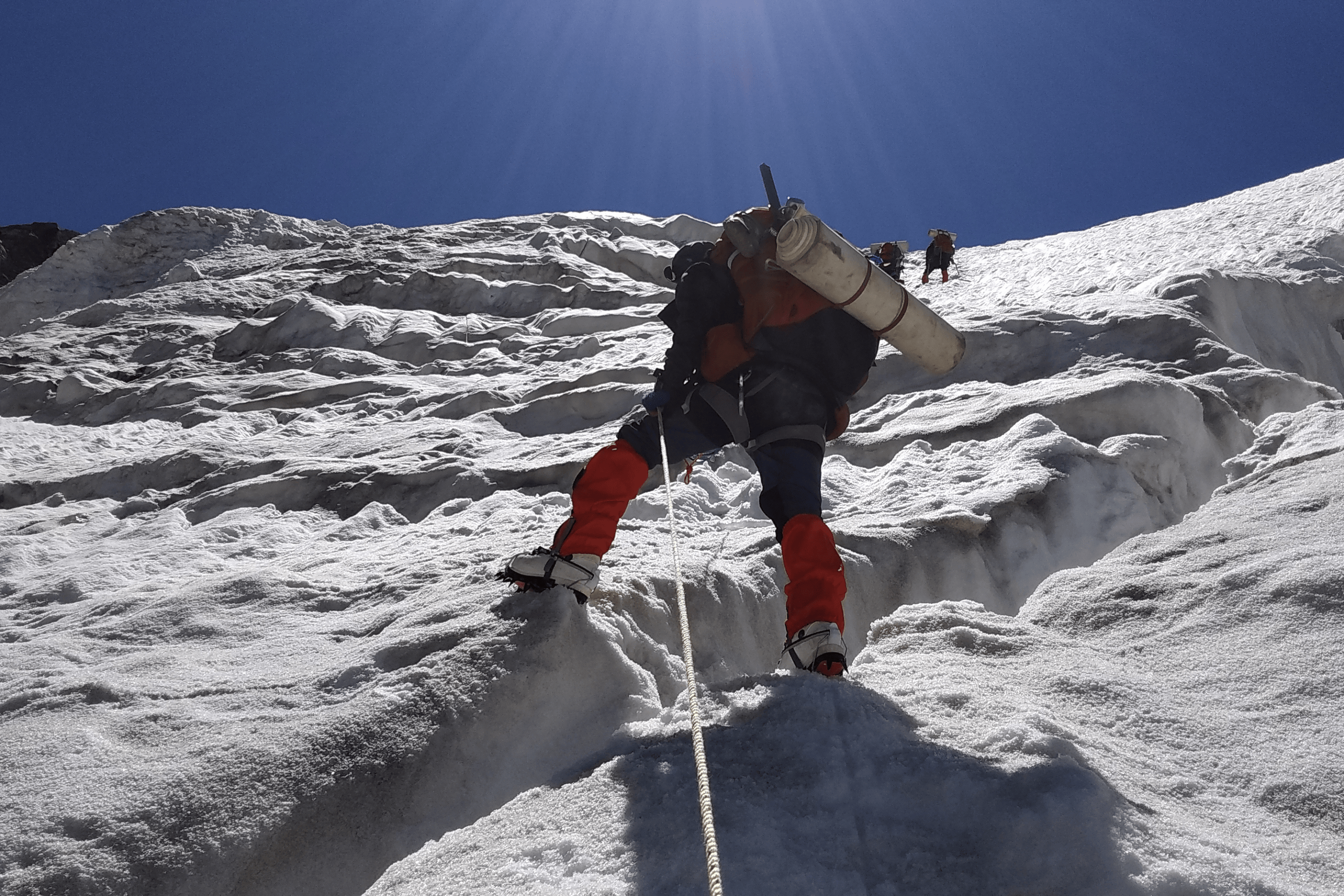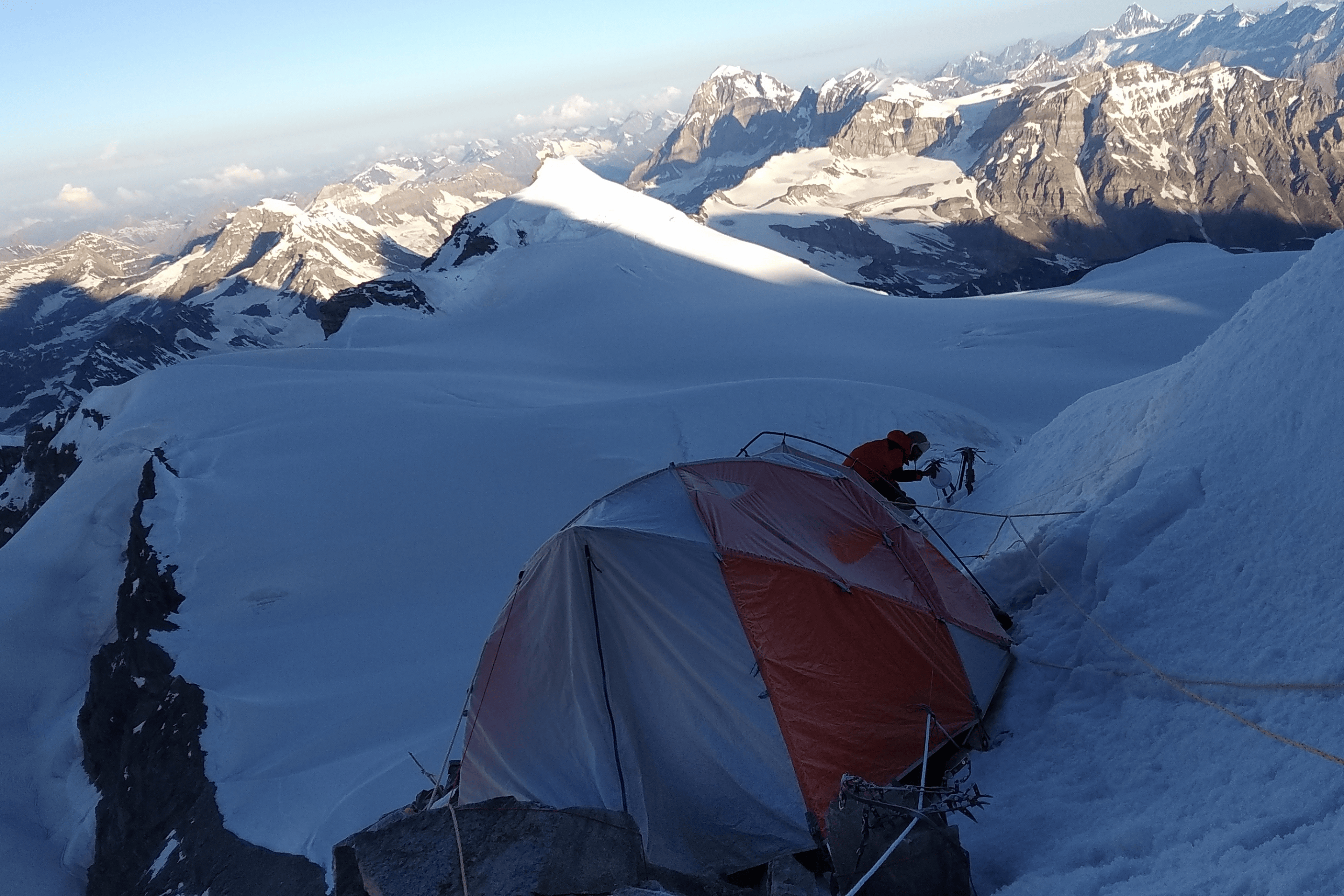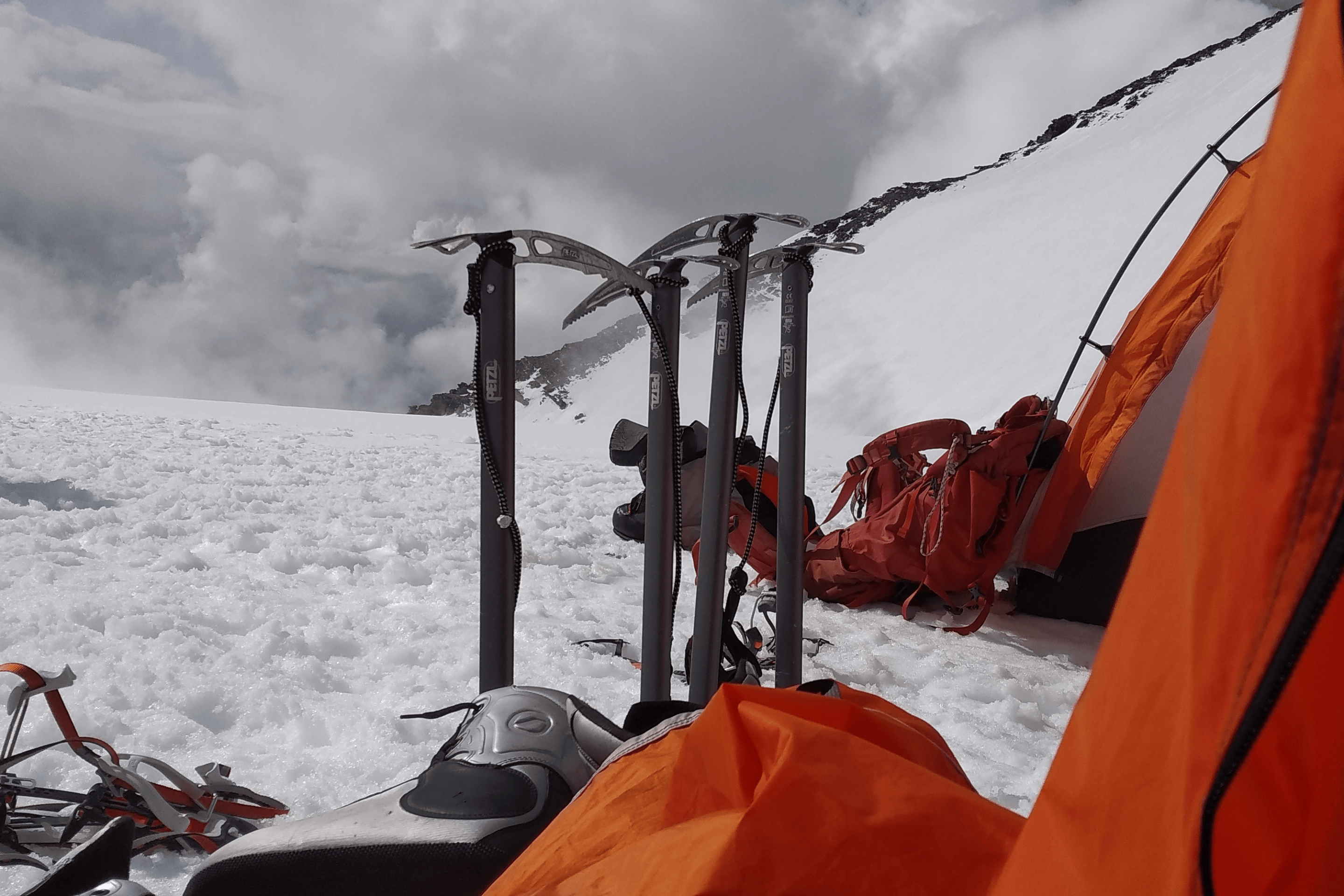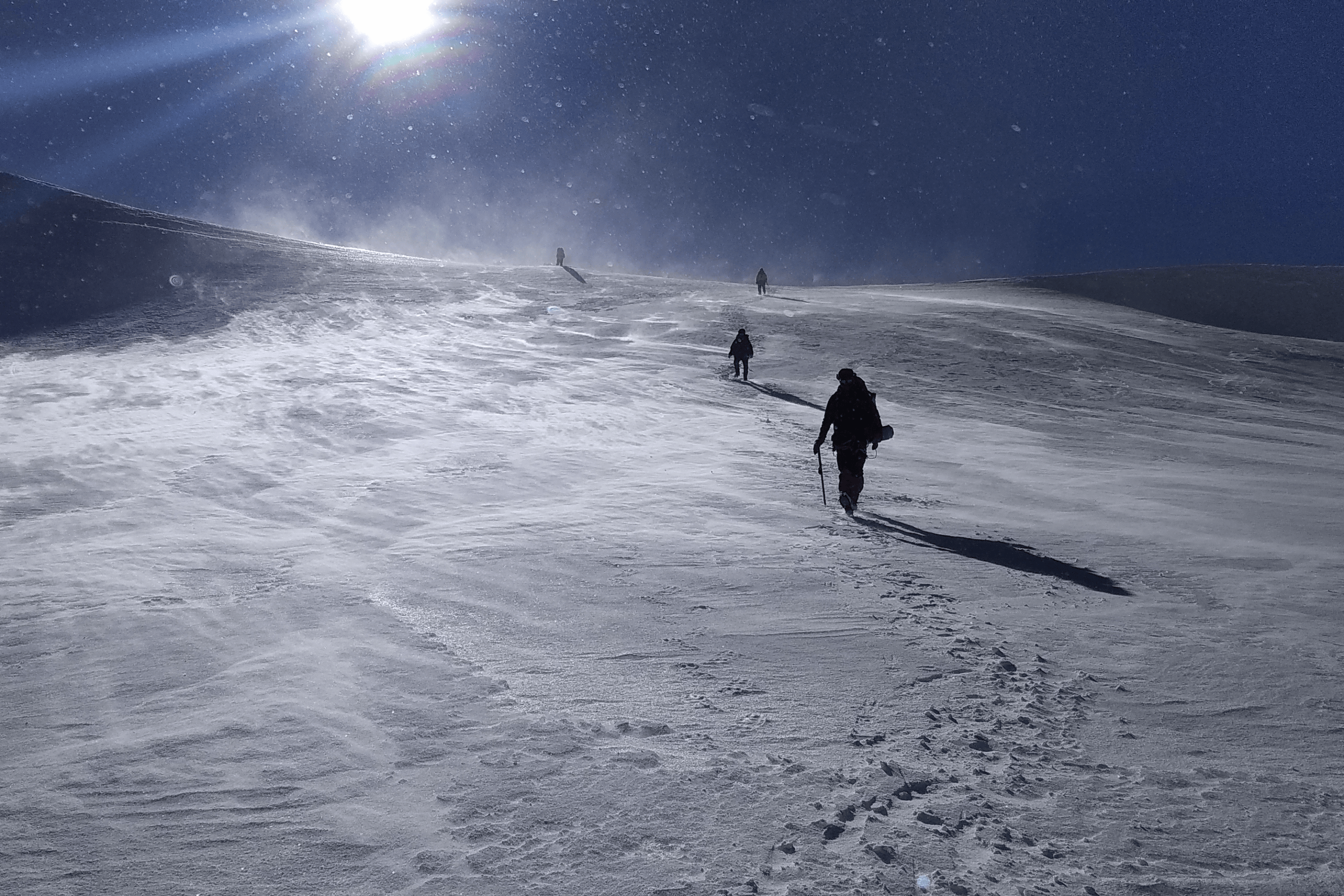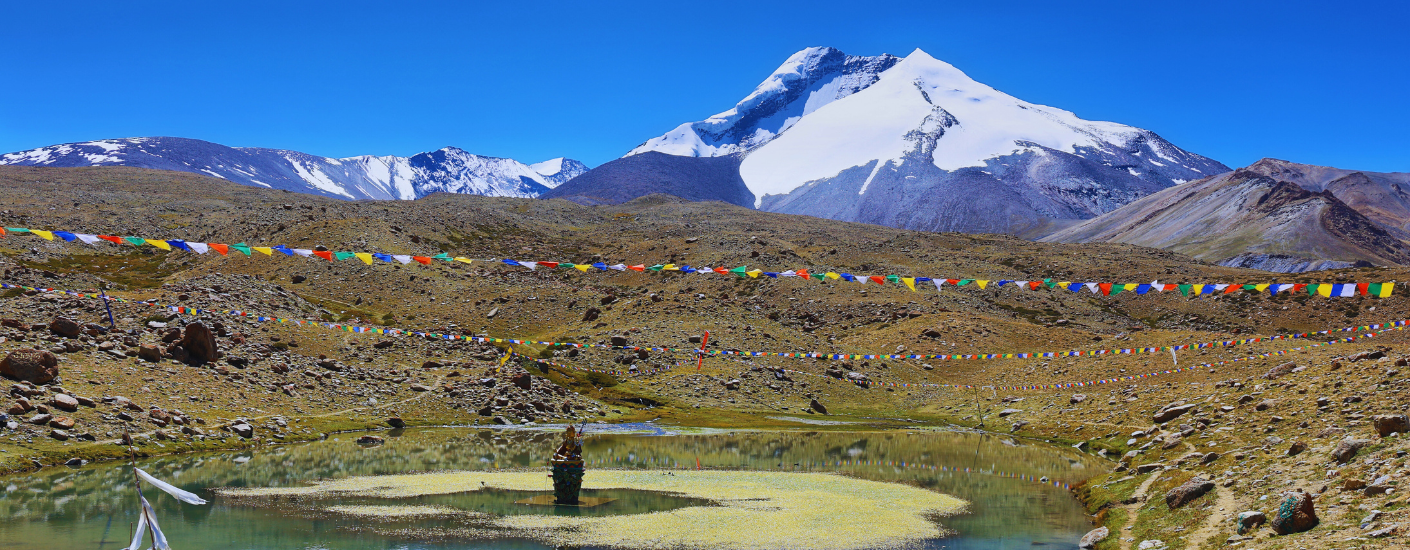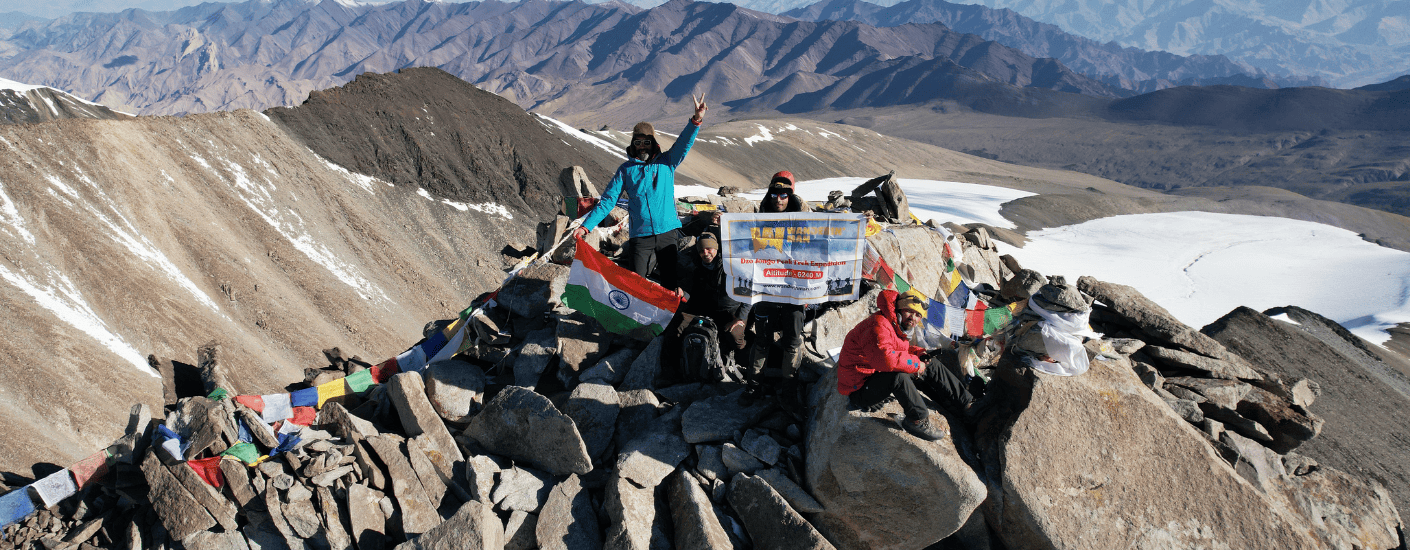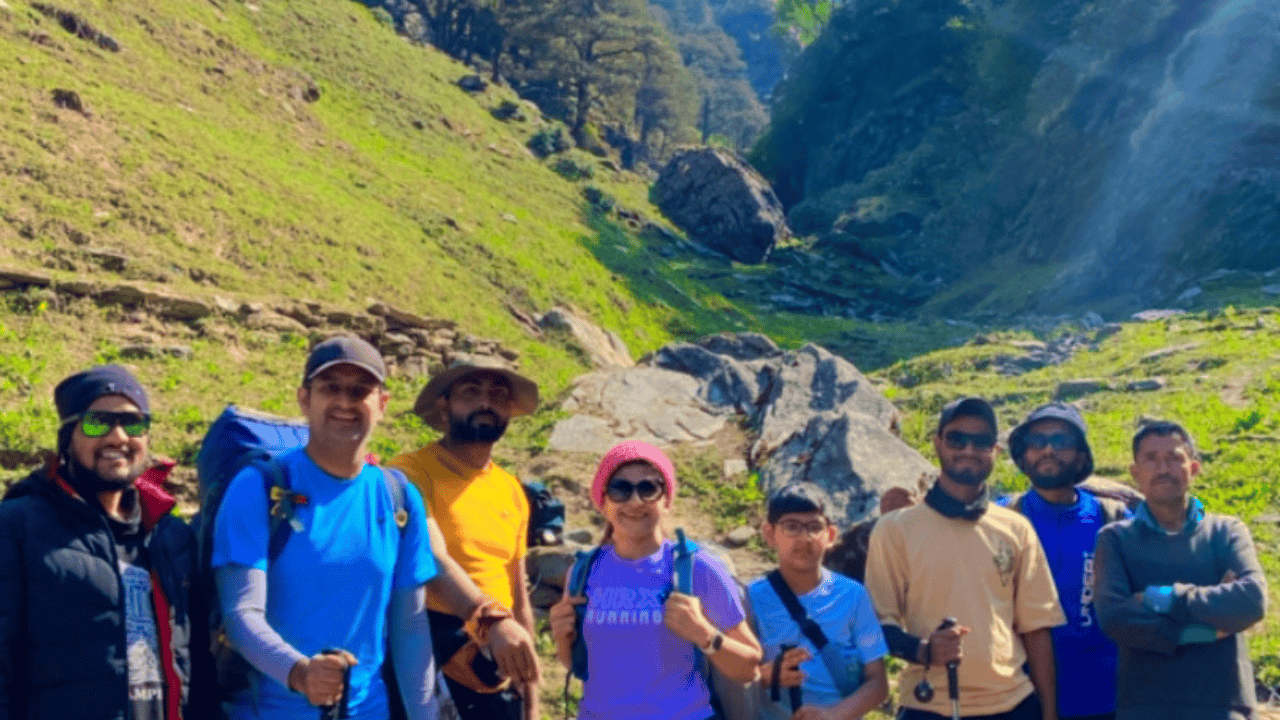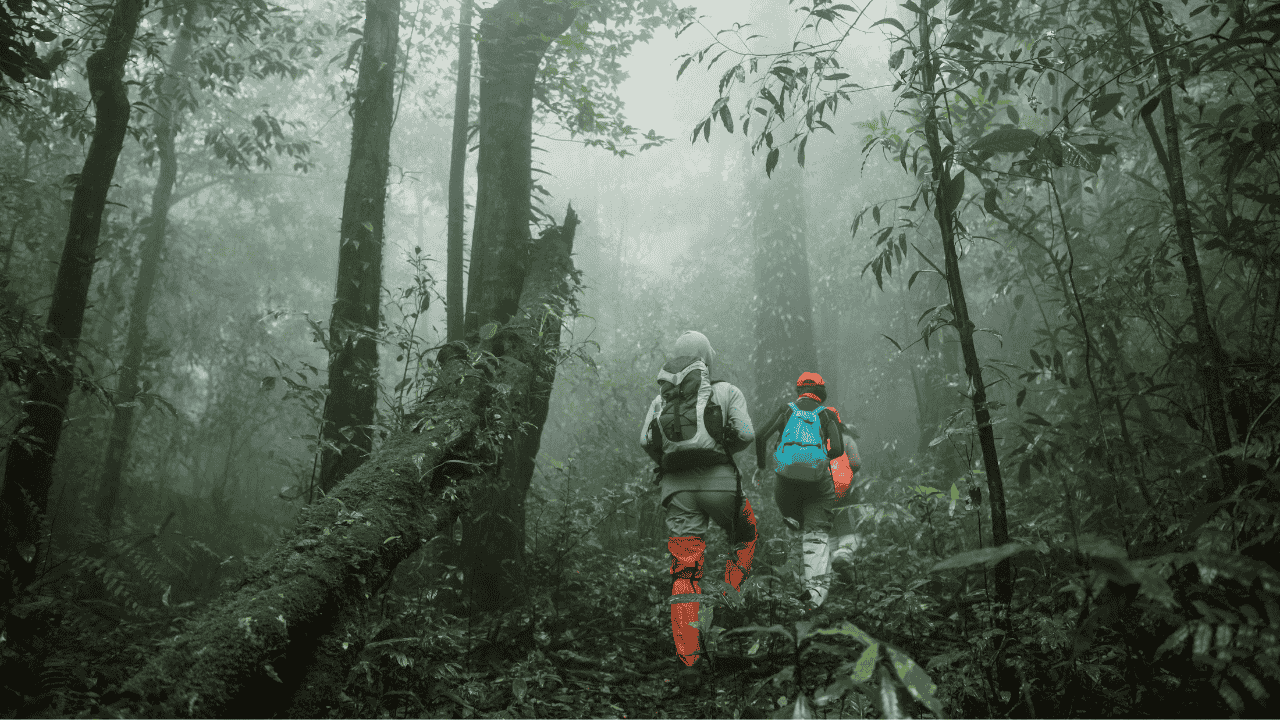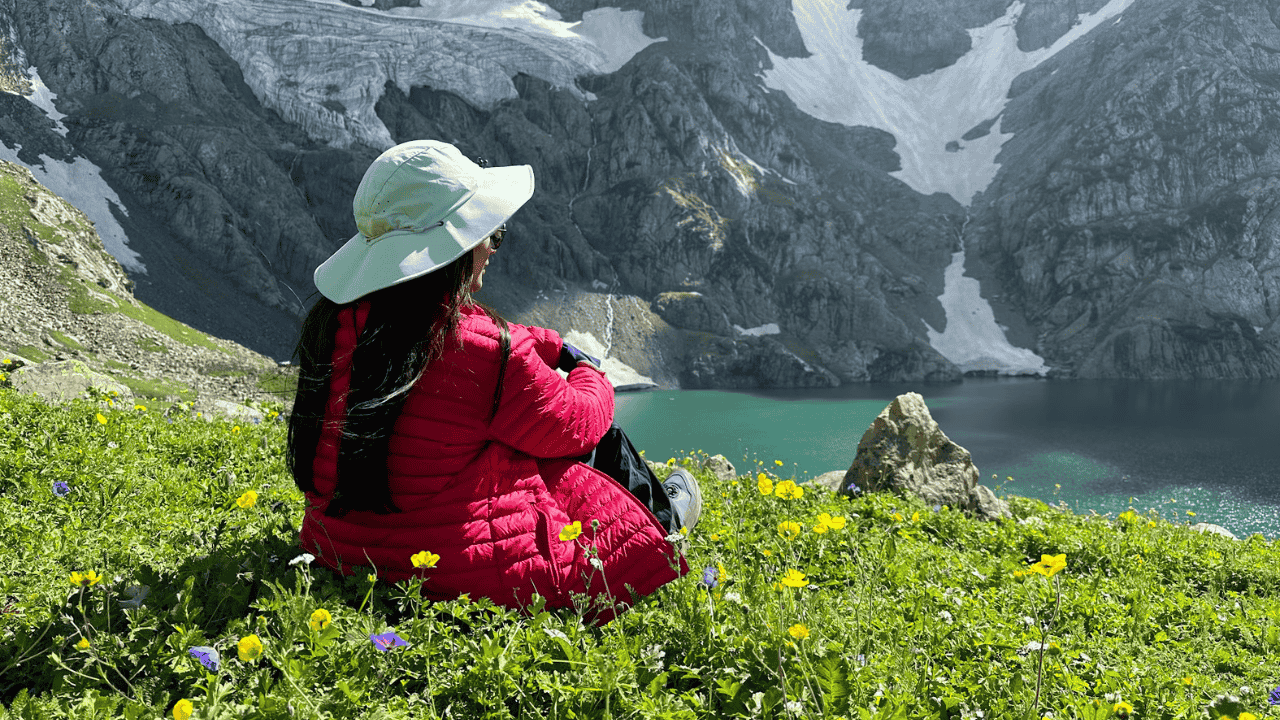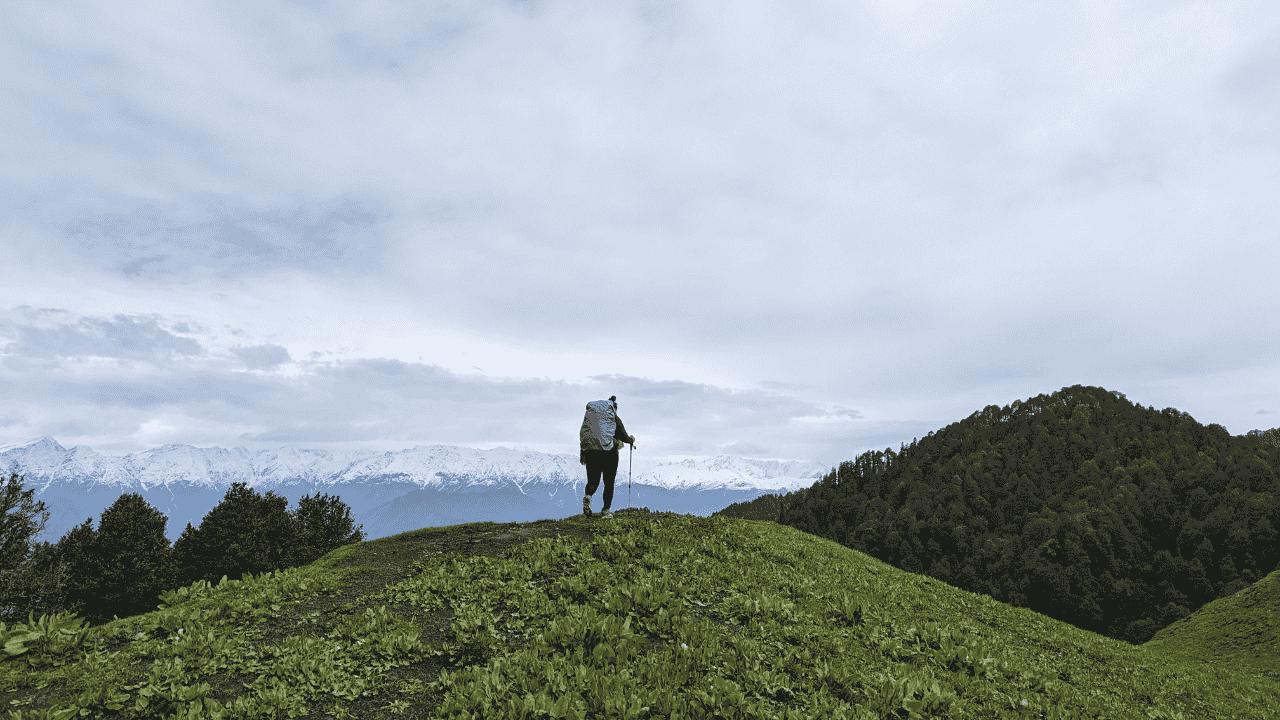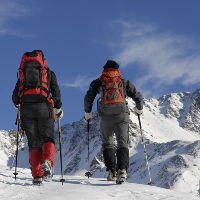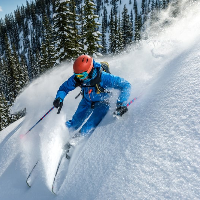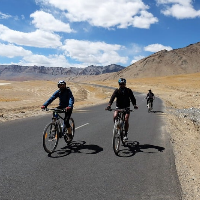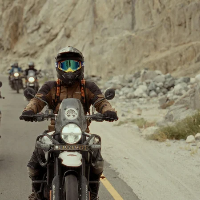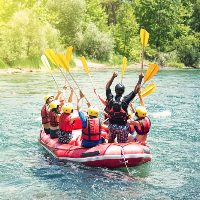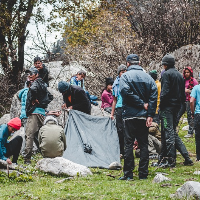Itinerary Description
Introduction
The Mt. Nun expedition is going to test the skills of the expeditionist to its limits. For Mt. Nun expedition one needs to have the special skill set to counter the complexities of the terrain. The Mt. Nun expedition is highly technical & complex due to the unpredictable weather, unannounced blizzards and its daunting height. It is thus counted as one of the best high-altitude expeditions. The Mt. Nun expedition is really going to be unnerving at times due to the scale and the complexity of the peak. Being the highest peak in the Zanskar valley of Ladakh, Mt. Nun stands to the height of 7135m. It has a shorter peak named Mt. Kun, which stands at a height of 7077m. Both the peaks are separated by the distance of 4km. The Nun massif is counted as one of the highest. The complex landscape combined with the unpredictable weather conditions is going to present a higher degree of challenge for the expeditionist. So, an experience and expertise of higher level is required to tackle this challenge.
Best Time
The best time to scale the summit is during the month of July to September. During this time the summit provides the best route which could be difficult to scale during the other months due to excessive weather conditions. The summit presents a higher degree of technical & demanding difficulty due to the boulders, unpredictable wea1`ther and steep slopes. Thus, it is necessary to acclimatize properly to with stand the unpredictable conditions. It is also necessary to have the required experience and technical expertise to scale the summit.
Short Itinerary
Day 1: Mandatory Expedition Briefing at IMF
Day 2: Arrive in Leh (3500 mts)
Day 3: Acclimatization at Leh (3500 mts) Local sightseeing
Day 4: Leh (3500 mts) to Kargil (2676 mts) 217 km (6 to 7 hours)
Day 5: Kargil (2676 mts) to Tangol (3700 mts) 65 km (2 hours)
Day 6: Rest and Acclimatization in Tangol (3700 mts)
Day 6: Tangol (3700 mts) to Base Camp (4600 mts) 8 km (7 hours)
Day 7: Acclimatization at Base camp (4600 mts)
Day 8 to 18: Scaling the Summit (7135 mts)
Day 19: Base camp (4600 mts) to Tangol (3700 mts ) 8 km (7 hours) and drive to Kargil (2676 mts) 65 km (2 hours)
Day 20: Drive Kargil (2676 mts) to Leh (3500 mts) 217 km (6 to 7 hours)
Day 21: Reserve Day
Day 22: Reserve Day
Day 23: Departure from Leh (3500 mts)
Detailed Itinerary
Day 1
Day 1: Mandatory Expedition Briefing at IMF
Foreign tourists and climbers are requested to arrive in Delhi a day prior. Attend a briefing session at the Indian Mountaineering Federation (IMF), where the Liaison officer (LO) will introduce himself. Stay overnight in Delhi.
Day 2
Day 2: Arrive in Leh (3500 mts)
The journey starts with the arrival at Leh. A prime tourist and expedition destination, it invites a lot of crowds all the year round. This day will be marked by arrival and rest at Leh.
Day 3
Day 3: Acclimatization at Leh (3500 mts) Local sightseeing
This day will be marked by the rest and acclimatization with environment at Leh. It will also be the day of briefing for the expedition.
Day 4
Day 4: Leh (3500 mts) to Kargil (2676 mts) 217 km (6 to 7 hours)
The expedition starts with the travel to the destination from Leh via Kargil. It will be the drive of over a 217 kms which will take about 7 hours to cover.
Day 5
Day 5: Kargil (2676 mts) to Tangol (3700 mts) 65 km (2 hours)
A short drive from Kargil to Tangol, will take you out of the civilization closer to your destination.
Day 6
Day 6: Rest and Acclimatization in Tangol (3700 mts)
Rest for Acclimatization at Tangol village and stay in Camps
Day 7
Day 6: Tangol (3700 mts) to Base Camp (4600 mts) 8 km (7 hours)
This will be the first part of the expedition to do some trekking as you will be moving to the higher altitudes. You will encounter the route complexities in the form of steep climbs and trails. At the Base Camp, you will retire for the day.
Day 8
Day 7: Acclimatization at Base camp (4600 mts)
This will be the rest day at the Base camp where you will acclimatize with the changed atmosphere and also you will be briefed about the expedition details further.
Day 9
Day 8 to 18: Scaling the Summit (7135 mts)
The real action begins with the start of the expedition from the base camp. You will be encountering the extreme conditions which will be the real test of your mettle. You should have some real experience to scale such heights. The technical understanding of the mountaineering is going to help you traverse the complex course.
Day 10
Day 19: Base camp (4600 mts) to Tangol (3700 mts ) 8 km (7 hours) and drive to Kargil (2676 mts) 65 km (2 hours)
After the expedition you will make the return from the base camp to Tangol and drive to Kargil via the same route.
Day 11
Day 20: Drive Kargil (2676 mts) to Leh (3500 mts) 217 km (6 to 7 hours)
Drive Kargil to Leh via the same route.
Day 12
Day 21: Reserve Day
The reserve day is incorporated into the itinerary to counter any last-minute adjustments to the schedule.
Day 13
Day 22: Reserve Day
The reserve day is incorporated into the itinerary to counter any last-minute adjustments to the schedule.
Day 14
Day 23: Departure from Leh (3500 mts)
Your Expedition End after celebration.
WHAT'S INCLUDED
- ●Accommodation arrangement on the expedition will be on sharing basis in Tents or a budget hotel.
- ●A certified Expedition Leader and a professional Sherpa, will be on your expedition course. The team has experience and expertise for any emergency situation.
- ●Support staff composed of an experienced Sherpa, Cook, Camp Staff, Porters/Mules for all the arrangements on the Expedition.
- ●Safety Equipment including medical kit, Oxygen Cylinder, Oximeter, Crampons, Gaiters, Ropes and other equipment will be provided by us.
- ●Only for Indian Clients, All the applicable trekking permits, Camping Charges, Forest Entry Fee, etc. will be paid by us. Foreigners have to pay these charges if not mentioned. IMF fee and Liaison officer included.
WHAT'S NOT INCLUDED
- ●Personal expenses on the way.
- ●Cost of any kind of Insurance. Since insurance is mandatory, kindly get yourself insured from our partners ASC360 through www.asc360.com
- ●Mules or porter expenses to carry personal luggage.
- ●Anything not specifically mentioned under the head Inclusions
- ●Any extra flight booking amount should be paid on actuals by the participant
- ●Only for foreign nationals US$ 1000 for a team of upto two members and US$ 4
- ●IMF deputed liaison officer is mandatory in case of foreign nationals. Expen
Are you eligible for this adventure?
Annapurna Base Camp Trek takes you to a height of 4,130M and is rated a moderate level trek for its long trekking distances. For its elevation and distances, it is recommended for trekkers with some prior experience in the high-altitudes.
Grade
Challenging
Max Altitude
7135 mts
Distance
64 km

WMRS Level Required

Terrain

Prerequisite Skills

Fitness Benchmark
WMRS Level Required
WMRS 8
Annapurna Base Camp Trek is a level 4 adventure on the Bikat Rating Scale.
This makes it mandatory for you to have high-altitude experience of preferably multiple treks marked at level 3 on the WMRS. The altitude, the terrain, and the nature of the climb demand a certain level of endurance and a need for you to be aware of how your body reacts to the various features of the high-altitude environment.
If you do not know what level of WMRS trek would suit you best, worry not! Fill out this Form:
We will send you a progression chart to help you comfortably get out of your comfort zone in order to level up and ultimately reach your highest potential in the big, bad world of outdoor adventure.
Packing List
This is a list of essential items for individuals going on a trek with Wanderin’ Man Adventures. This list contains only those items which the participants are required to bring with them. The list excludes those items which are provided by Wanderin’ Man Adventures on the trek. We have divided the items into five categories. All the items in the list are essential except for those marked as optional.
🟩 Trekking Gear
- Rucksack bag with rain cover
- Day Pack Bag - Recommended for treks with summit day
- Head Torch with spare Batteries
- UV protection sunglasses
- Water Bottles - 2 bottles of 1 liter each
🟩 Footwear
- Non-skid, deep tread, high-ankle trekking shoes - 1
- Pair of light weight Slipper/Sandals for the campsite - 1
🟩 Clothing
- Quick Dry Warm lower or Track Pants - 2
- Full sleeves T-shirts/Sweatshirts (1 for every 2 days of trekking)
- Pair of thick woolen socks (1 pair for every two days of trekking)
- Thermal Body warmer Upper & Lower - 1
- Undergarments (1 for each day of the itinerary)
- Warm jacket closed at wrist & neck - 1
- Full sleeves sweater - 1
- Rain wear (Jacket & Pants) - 1
- Pair of water-proof, warm gloves - 1
- Woolen cap - 1
- Sun shielding Hat - 1
- Multipurpose Buff - 2
🟩 Toiletries
- Personal toiletries kit (Small Towel, Toilet paper, paper soap, Bar soap, toothbrush, toothpaste, cold cream, etc.)
- Sun screen lotion small pack (SPF 30 & Above) - 1
- Lip Balm small pack - 1
🟩 Utensils
- Small size, Lightweight & Leak proof lunch box - 1
- Plate - 1
- Spoon - 1
- Tea/Coffee (plastic) Mug - 1
🟩 Miscellaneous
- Camera (Optional)
- Carry your medicines in plenty in case you have any specific ailment. Consult your doctor before joining the trek.
- Dry fruits, Nuts, Chocolate bars (Optional)
Note-
- For long treks, please carry a spare sunglasses.
- For winter trek please try to carry a thermal water bottle.
- For long winter treks, please carry an extra pair of warm pants.
Frequently Asked Questions
Why Wanderin Man?
(SET- Safety, Expertise & Trust )

Safety
- ●Small Group Size in the ratio of 6:1 (participant to leader)
- ●No compromise on safety and sustainability promise
- ●Experienced and Certified Mountaineering Professional Leaders
- ●Region Mapped with Emergency Evacuation Plan
- ●Certified Standard Equipment by UIAA (International Climbing and Mountaineering Federation certification) & other Similar Bodies
- ●Minimized Risk Management Standard Operating Procedure are applied for every Trek and tour
- ●Certified First Aid Support and Doctors* with constant availability of Safety Equipments like Medical Kit, Rescue Kit
- ●Constant communication is aided with the help of Communication Devices
- ●Certified and registered Transporter for transportation purpose

Expertise
- ●Founders of the company have extensive experience of 15 years having organized approx 2000+ trekking, Expeditions and other adventure activities.
- ●Wanderin’ Man Adventures operating expeditions above 8000 mts.
- ●Under the umbrella of Wanderin’ Man Adventures 15 + adventure activities Programs have been organized
- ●Founders have mountaineering certifications from the esteemed mountaineering institutes of India.
- ●Team is composed of experienced mountaineers and trek leaders with thorough understanding of norms and procedures.

Trust
- ●Trust has been the hallmark of our company since its inception be it any program on the list.
- ●Special emphasis is laid on the use of standard procedures and equipments as per the mountaineering norms
- ●95% of our clients have availed our service on repeat basis.
- ●Our business has expanded primarily based on the “word of mouth” from our existing clients to new ones
What Our Customers Say
Cancellation Policy
Cash Refund (All events including Friendship Peak Expedition except other Mountaineering Expeditions) - Cash refunds are only available for bookings made without any discounts, such as promotional codes or dynamic discounts. Additionally, cash refunds are not available for shifted batch bookings or if the booking status is "Booked". The amount of the refund will be determined based on the following guidelines:
Cancellations made up to 45 days before the departure date
Cancellations made up to 31 days before the departure date
Cancellations made between 30 and 21 days before the departure date
Cancellations made between 20 and 11 days before the departure date
Cancellations made less than 11 days before the departure date are not eligible for a cash refund.
Similar Adventures
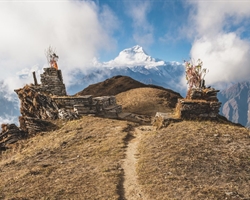
Khopra Ridge Trek
Less popular, less crowded, more beautiful alternative to ABC
- Nepal
- 10 Days
- BRS 4
- 4767 m
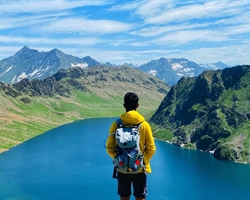
Tarsar Marsar Trek
A Shorter and Easier Alternative to the Kashmir Great Lakes Trek
- Kashmir
- 7 Days
- BRS 4
- 4024 m

Hampta Pass Trek
An Enchanting Cross-Over from Manali to Spiti
- Himachal
- 5 Days
- BRS 4
- 4200 m
Related Itinerarys

 Max Participants :
8
Max Participants :
8
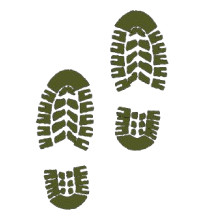 Trail Type :
Starting and ending at the same point
Trail Type :
Starting and ending at the same point
